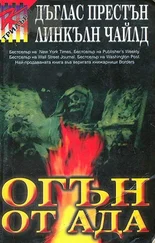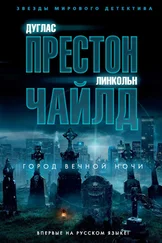She turned and followed the confusion of footprints back to a point where they neared the crime scene. Lights blazed through the pouring rain, illuminating a gutted Range Rover, half-sunk in the muck, surrounded by tape. The closest officer was standing barely twenty feet from her, drenched to the skin, shining his light around in an apathetic display of searching. Moving away from him, she circled and approached the back of the wrecked car through heavy vegetation. She knelt and crept under the crime scene tape. The rear end of the car was badly burned: scorch marks licked all the way to the front passenger door. The Rover was not torched completely — the driver’s seat and engine compartment were intact, and retardant foam covered the windows, now slowly being washed away by the rain. Four police officers stood on the other side of the car, just outside the tape. They seemed to be waiting.
Constance paused, assessing the situation. Then she crept closer to the passenger side of the vehicle. She could see that the metal had been punctured by large-caliber bullets, the holes running in a neatly stitched line. The panoramic roof was a gaping mouth of glass. Stealing closer, staying low and remaining in the shadow, she approached the rear door. It was ajar, and she quickly slipped in.
The interior smelled of melted plastic, burnt wiring, scorched leather and flesh. She caught her breath as she noticed a human being, hair and clothes burned off, teeth clenched shut in a lipless smile, limbs drawn up in the strange manner of the burned. The bullet holes in the ceiling, dripping with rain, and the remains of pooled blood that had boiled away around his feet told the story of his demise. The corpse was unrecognizable, but she noticed the distinctive red sneakers on the body’s feet, the only part that hadn’t burned. Aloysius had mentioned those to her with amusement while discussing the postdoc working with the oceanographer: The body must be that of Wallace Lam, the technician.
Her heart froze. Despite the evidence, a part of her hadn’t quite accepted the idea that this could be Pendergast’s car. It seemed unlikely that anyone could successfully abduct him. But here was proof. She gingerly lowered herself onto the rear seat next to the body, the charred leather crackling.
She took a moment to think. The huddle of cops was not more than twenty feet away, but within the vehicle she was shielded from view and nobody seemed inclined to look closely. The foam and smoke on the windows also helped obscure the interior.
The body explained why the police were just standing around: they must be waiting for an M.E., an ambulance, and a CSI and forensic evidence team to process the site before they could move the car and body.
If Lam had been sitting in the rear seat, and Pendergast had been driving, it meant Lam’s boss, Pamela Gladstone, would have been in the front passenger seat. In all likelihood, Pendergast had not been kidnapped alone: the oceanographer had been taken as well.
From behind, she heard the distant whoop of sirens: the rest of the cavalry was arriving. She didn’t have much time.
But she didn’t leave. Pendergast had led his pursuers on a chase that had ended here. Why the chase, the sudden flight? It seemed clear Pendergast had discovered something that forced the hand of whoever was behind this — and provoked a massive reaction. Whatever he’d found must have been of great importance.
Knowing he was being chased, in possession of vital information, he might have left a message with that information. That message would be somewhere in the car. The more she thought about it, the more she was certain. But there was no telling how long it would take the cops and forensic teams to find it.
She crouched in the dark interior, thinking. The car had been on fire. He couldn’t leave a scribbled note just lying inside somewhere: it would either burn up or be found by his kidnappers. He would have to place the message someplace where the fire couldn’t reach it, but where he knew it would eventually be found. And he’d had mere seconds.
Loud voices, suddenly near, forced her to duck down and remain motionless. They moved a little farther away, blending with the approaching sirens. Headlights stabbed through the scorched windows. Keeping low, Constance leaned forward and popped the glove compartment. Nothing. The cup holders and console compartment were empty. She lifted the front floor mats but found nothing underneath.
The problem was, with the car on fire, all these things could have burned up. So what place inside the car was most likely to survive a fire?
Constance glanced around the backseat, but it was thoroughly burned, the seats charred down to the springs.
Her gaze settled on Lam. She took in his burned clothes; the seared remains of hair; his teeth, still strangely white, clenched against the heat...
There was the faintest of hesitations. And then, in a single swift movement, Constance slipped the stiletto from her pocket, forced it between Lam’s teeth, and twisted.
For a moment, nothing happened. And then, with an unpleasant cracking noise, Lam’s teeth — brittle from the heat — gave way and the jaw came loose. She reached in and there it was: something hard and small, pushed deep into the throat. She withdrew it: a tiny test tube, stoppered with a rubber plug.
Now more flashing lights came into view behind her, and she could hear slamming doors. Vaguely, through the blurry windows, she made out a forensic team. Constance shoved the tube into the pocket of her leggings. Then she reached out, put her cool hand on the corpse’s withered fingers. “Thank you, Dr. Lam,” she murmured. The phrase Lipsbury pinfold came unbidden into her mind, and she was distantly surprised by the fact she could entertain such an obscure allusion at a time like this. The young scientist, in death, had provided the safest, if unlikeliest, place to protect a small article from fire, where it was certain to be found — eventually.
Constance glanced left and right, took a deep breath, and slid sideways and low out the open rear door. She dropped to her knees and crawled back under the police tape and into the thick vegetation.
Mark Macready, watching the distant proceedings with increasing alarm, almost had a heart attack when — with no notice whatsoever — the woman, soaking wet, muddy, and stinking of soot and smoke, slipped back into his rear seat.
“You may now leave, Mr. Macready,” she said, her breathing fast. “The quicker, the better.”
He stared at her in the rearview mirror.
“ Now , if you please,” she said.
Not until they had reached Highway 41 and were speeding northward did Constance dip into her pocket and pull out the miniature test tube. Examining it in the courtesy light, she saw it contained a rolled-up fragment of paper. She upended the test tube and let the paper fall into her palm. Opening it carefully, she found it was part of a computer printout, apparently a list of place-names. One of them had been hastily circled:

Moments after she restoppered the note, her phone rang.
“It’s Coldmoon,” came the voice when she answered. “I’ve been waiting for your call. What the hell’s going on—?”
Constance interrupted. “Aloysius was abducted. They ambushed his car in the swamplands south of Fort Myers, along with that oceanographer Gladstone and her assistant, Dr. Lam; shot the car full of holes; killed and burned Lam — and took Aloysius and Gladstone.”
A brief silence. “Any idea where they’re taking him?”
“He left a clue. Two words: Crooked River.”
Читать дальше
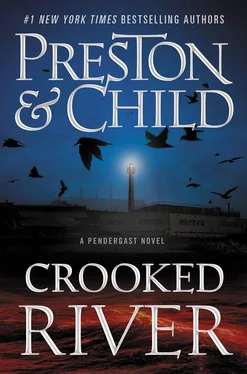

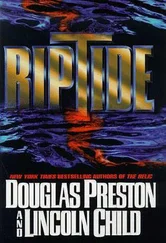
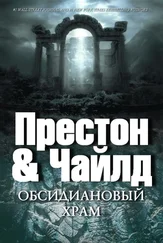
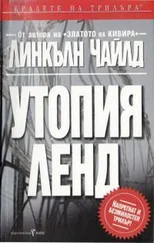
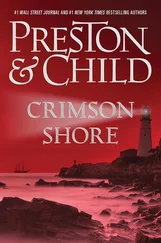
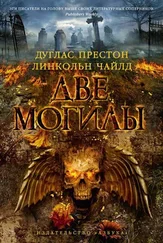
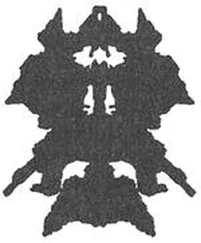
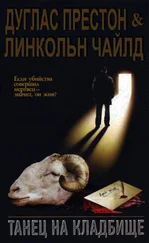
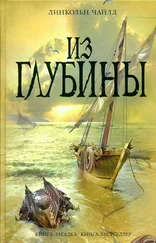
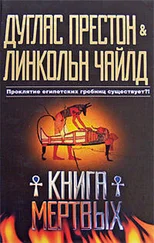
![Линкольн Чайлд - Стихи для мертвецов [litres]](/books/396536/linkoln-chajld-stihi-dlya-mertvecov-litres-thumb.webp)
